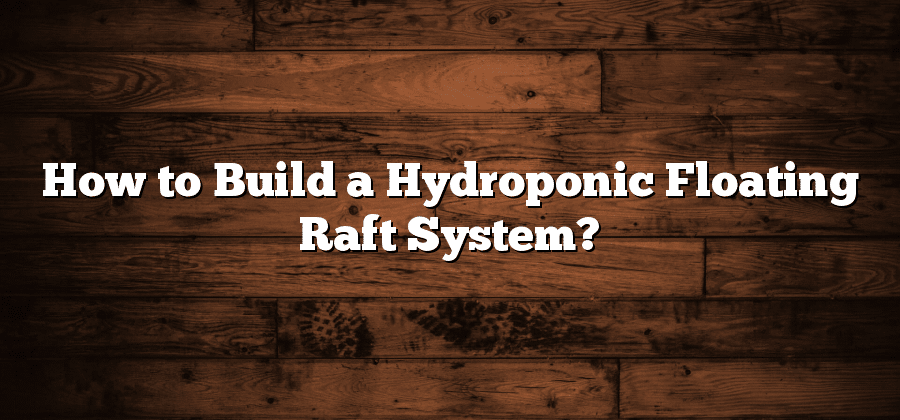Understanding the Basics of Hydroponic Farming
Hydroponic farming is a highly efficient method of plant cultivation that eliminates the need for soil. Instead, plants are grown in a solution of water and nutrients, allowing for greater control over their growth and development. This innovative approach to farming has gained popularity in recent years, as it offers several key advantages over traditional soil-based farming.
One of the main benefits of hydroponic farming is its ability to maximize space utilization. By eliminating the need for soil, plants can be grown in a more compact manner, allowing for higher yields in smaller areas. This makes hydroponic farming particularly well-suited for urban environments, where space is often limited. Additionally, the controlled environment of a hydroponic system enables farmers to optimize the growth conditions for their plants, resulting in faster growth rates and higher-quality crops. Overall, understanding the basics of hydroponic farming is essential for anyone interested in harnessing the benefits of this modern agricultural technique.
Selecting the Right Materials for Your Floating Raft System
Hydroponic farming offers a versatile and efficient way to cultivate plants in a controlled environment. When it comes to designing a floating raft system for hydroponics, selecting the right materials is crucial to ensure optimal plant growth and system longevity. In order to make an informed decision, there are several key factors to consider.
First and foremost, it is essential to choose materials that are non-toxic and food-safe. Since the roots of the plants will be in direct contact with the materials, any harmful chemicals or contaminants can be absorbed by the plants and affect their health. Look for materials that are certified safe for use in hydroponics, such as food-grade plastic or PVC, which are commonly used in the construction of floating raft systems. Additionally, consider materials that are resistant to corrosion and degradation, as the system will be constantly exposed to water and nutrient solutions. This will ensure the durability and longevity of the floating raft system, reducing the need for frequent repairs or replacements.
Designing and Building the Structure of the Raft System
Hydroponic farming offers numerous benefits, from maximizing space utilization to reducing water consumption. One crucial aspect of this innovative farming technique is the structure of the raft system. Designing and building the structure requires careful planning and consideration to ensure optimal plant growth.
When it comes to the structure of a hydroponic raft system, several factors must be taken into account. Firstly, the material chosen should be sturdy and durable enough to withstand the weight of the plants, water, and nutrient solution. PVC pipes or wooden boards are often used for the frame, while food-grade liners are used to line the raft bed to prevent leaks and contamination. Additionally, the size and dimensions of the raft system should be tailored to the available space, as well as the specific crop being cultivated. Proper spacing between the rafts allows for adequate air and light distribution, promoting healthy plant growth.
With the structure of the raft system in place, one must also consider the nutrient delivery system. This typically involves the use of PVC pipes and connectors to create a network of channels that allow the nutrient solution to circulate evenly throughout the raft beds. The nutrient solution must be carefully balanced to provide the necessary elements for plant growth, including nitrogen, phosphorus, and potassium. Monitoring the pH and conductivity of the nutrient solution is crucial for maintaining a healthy hydroponic system.
By paying attention to the design and construction of the raft system, hydroponic farmers can create an efficient and productive environment for their plants. The next step in successful hydroponic farming is selecting the appropriate plants for cultivation, which will be discussed in the following section.
Choosing the Appropriate Plants for Hydroponic Cultivation
Hydroponic cultivation offers an array of possibilities when it comes to choosing plants for a successful harvest. However, not all plants are suited for this soilless farming method. Understanding which plants thrive in a hydroponic environment is crucial for maximizing yield and ensuring the overall success of your system.
When selecting plants for hydroponic cultivation, it’s essential to consider factors such as growth rate, root structure, and nutrient requirements. Fast-growing plants, such as lettuce, spinach, and herbs like basil, are excellent choices for hydroponic systems. These plants have a shorter cycle from sowing to harvest, allowing for multiple yields throughout the year. Additionally, their shallow root systems adapt well to the floating raft system commonly used in hydroponics. Furthermore, make sure to choose plants that have low nutrient demands and are known to have high productivity in hydroponic setups. This will ensure that your nutrient solution can adequately sustain their growth without excessive adjustments.
Preparing the Nutrient Solution for Optimal Plant Growth
To achieve optimal plant growth in hydroponic farming, it is essential to prepare a nutrient solution that provides all the necessary elements for the plants to thrive. The nutrient solution serves as the primary source of nutrition for the plants as they are grown without soil. It is crucial to strike the right balance of essential nutrients to ensure healthy and vigorous plant growth.
When preparing the nutrient solution, it is important to understand the specific requirements of the plants you are cultivating. Different plants have varying needs in terms of nutrients, pH levels, and concentrations. Conducting thorough research and consulting reputable sources will help you determine the ideal composition of the nutrient solution for your chosen plants. This will involve selecting the right fertilizers and supplements, as well as meticulously measuring and mixing them to create a well-balanced solution. By taking the time to carefully prepare the nutrient solution, you are laying the foundation for successful hydroponic cultivation and maximizing the growth potential of your plants.






